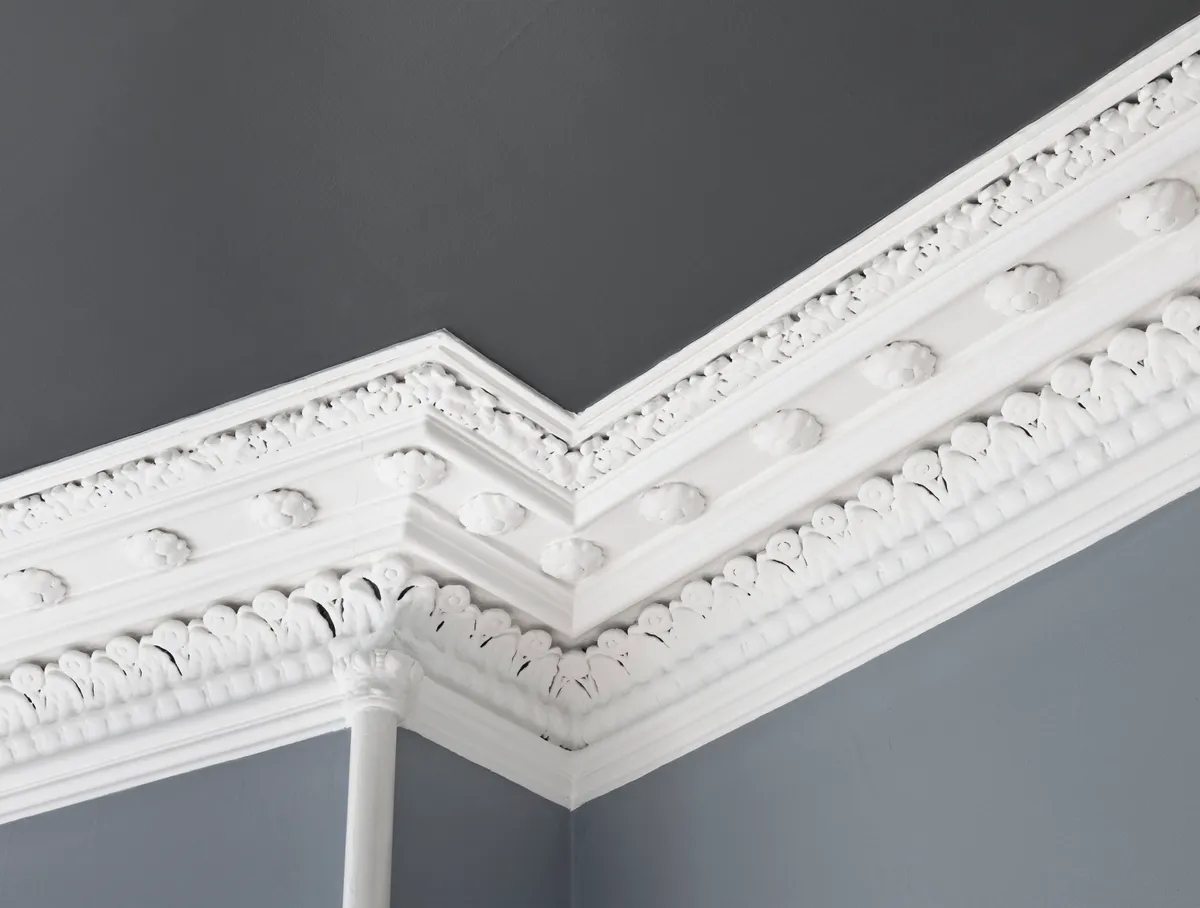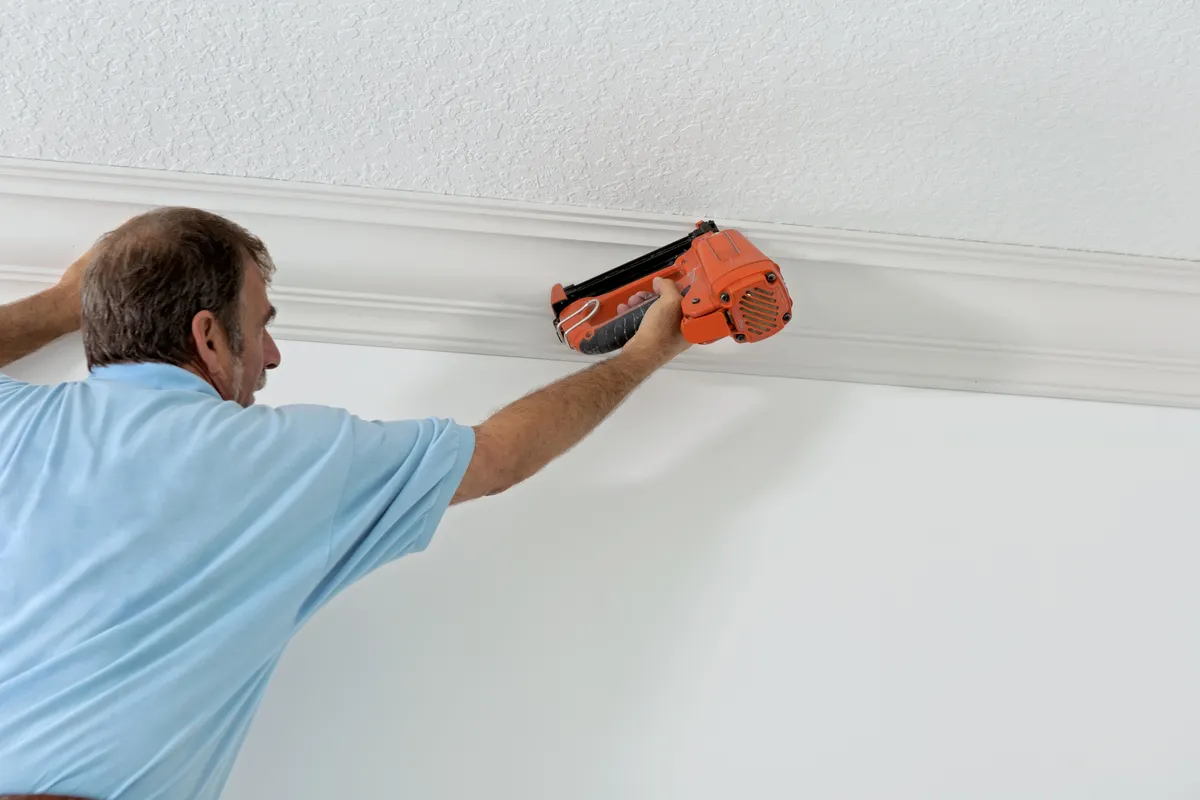Coving or ceiling moulding is the ideal finishing touch for any decorating scheme. It seamlessly makes a visual transition from the walls to the ceiling.
Depending on which style you choose, you can turn it into an eye-catching feature or simply use it as a subtle architectural tool to give your room a more considered finish.
What is coving?
Coving is a decorative join between the wall and the ceiling of a room. It comes in a wide variety of styles to suit both traditional or more contemporary interiors. It is also sometimes known as ceiling moulding.
Coving with a C-shaped or geometric profile best suits modern properties, while for period homes like Victorian or Georgian, there’s a host of intricate mouldings that add character and interest to the room.
The popular ‘egg and dart’ or fleur-de-lys patterns are ideal for Victorian properties, whereas the Georgians preferred detail with square patterns, often incorporating dentils (or ‘teeth’) in the designs.
Types of coving
There are three main materials:
Plaster – the most traditional material and also the most durable, so it needs less maintenance and less painting. However, plaster is heavier than other coving.
Duropolymer – this comes with the benefits of plaster coving, but it’s more lightweight and also quicker to install.
Polystyrene – this is the cheapest option, and again is more lightweight than plaster coving. It’s also the least durable, and usually needs several coats of paint to achieve a good finish.
What is the difference between cornicing and coving?

Coving is the generic term for a moulding designed to hide the join between the wall and the ceiling. But the difference between then two is that cornices are ornate and covings are simple.
Covings form a steady line along the ceiling with the profile being a very traditional quarter-circle (or C shape). Standard covings can come in various sizes, with the most popular being 127mm.
However, this number does not refer to the height or projection, it indicates the imaginary diagonal line from the wall to the ceiling that will be filled by the coving.
Cornices, on the other hand, can be highly intricate and complex in design. From different degrees of depth to intricately decorative carvings, cornices require a little more thought and effort to be crafted and fitted properly.
How do I measure up?
You should always put up ceiling mouldings straight and level, as you can fill in any gaps afterwards.
Lay down a dust sheet before you start and use a pipe detector to check for hidden pipes behind the walls.
Start on the longest wall and plan from there how it will go around the room and where the mitre joints on the corners will be internal or external.
- Check the manufacturer’s instructions to see how far the edges should be fixed from the wall and ceiling. This varies according to the style and size you choose.
- Go around the room and draw pairs of marks onto the wall and ceiling at 500mm intervals.
- Using a long spirit level, join up the marks so you have two continuous level pencil lines, one on the wall and one on the ceiling. These lines will be your guidelines.
How do I put up coving or ceiling moulding?

What you need to fit coving
- Tape measure
- Pencil
- Long spirit level
- Mitre box
- Coving mitre tool
- Fine-toothed panel saw
- Coving (and coving corners)
- Coving adhesive
- Ladder
- Sealant gun
- Retractable knife
- Fine graded sandpaper
- Cleaning cloth
- Scraper
- Workbench
- Paintbrush
- Panel pins
- Hammer
- Safety goggles
- Dust mask

